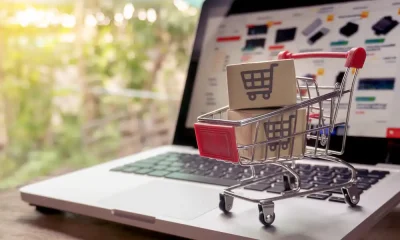Management
6 Smart Ways Restaurants Can Save Money

According to a report from the National Restaurant Association, the restaurant industry is a major driver of the U.S. economy, contributing more than $800 billion in annual sales and employing more than 15 million people.
Despite the industry’s success, restaurants face financial difficulties due to rising costs and competitive markets. If not careful, restaurants can be met with high overhead costs and slim profit margins.
6 Ways Restaurants Save Money
To help restaurants stay in the black, this article will outline six innovative ways restaurants can save money, including:
- Energy-efficient equipment
- Bulk purchasing
- Negotiating with suppliers
- Food waste reduction
- Review the menu
- Using technology
With the tips in this article, restaurants can quickly increase their profitability without sacrificing the quality of their food or service.
1. Invest In Energy-Efficient Equipment
The cost of utilities in a restaurant can be one of the most significant expenses for a restaurant. From the cost of electricity and gas to water usage, restaurants can save money by investing in energy-efficient appliances.
Statistics from the U.S. Department of Energy report restaurants can save up to 50% on energy bills by switching to energy-efficient appliances.
Energy-efficient appliances are readily available in the market and can be found in various sizes and features. Many of these appliances are Energy Star certified, which ensures they meet or exceed energy efficiency standards.
Restaurants can find energy-efficient appliances for refrigeration, dishwashing, and cooking equipment.
Other energy-saving solutions, such as LED lighting, occupancy sensors, and smart thermostats, can reduce a restaurant’s energy costs.
2. Use Bulk Purchasing And Negotiate With Suppliers
Another way restaurants save money is by buying in bulk and negotiating with suppliers. Bulk buying allows them to purchase large quantities of goods at a discounted rate, allowing them to spend less money per item.
Restaurants can also negotiate with suppliers to get better deals. This could be done by asking for discounts, longer payment terms, or even a mix of goods from different suppliers. For example, a restaurant could negotiate with a supplier for a lower price on pasta if they purchase a certain amount of tomatoes from the same supplier.
Negotiating with suppliers can also save restaurants money by reducing delivery costs. By negotiating a bulk order, restaurants can get a better deal on delivery fees and save money on shipping costs.
Plus, restaurants can request multiple orders be delivered at once to save time and money. For example, a restaurant may negotiate with a supplier to deliver all their cooking oil, spices, and vegetables in one shipment instead of having separate orders. This reduces the number of delivery trips and saves money on shipping costs.
3. Reduce Food Waste

One way restaurants continue losing money is through food waste. Restaurants throw away thousands of dollars of food each year, which can be prevented. To help reduce food waste, restaurants should regularly monitor their food inventory. Knowing what ingredients are needed, when to replenish, and how much they need to order can help restaurants manage their food waste better.
In addition to inventory management, restaurants should also consider implementing portion control. This will ensure that only the necessary food is served to customers. They can also consider donating excess food within their communities. This could reduce food insecurity in the local area and prevent food from going to waste.
Restaurants can consider composting any food scraps to reduce their carbon footprint. Finally, restaurants should educate their staff on proper food handling techniques to avoid unnecessary food waste.
4. Streamline Operations
Streamlining operations means reducing or eliminating unnecessary steps or processes to improve efficiency and cut costs. Restaurants can save money by streamlining their operations in a variety of ways. First, restaurants can cut costs by streamlining their ordering process.
By streamlining ordering, restaurants can save time and money by eliminating the need for manual data entry, reducing the number of vendors they deal with, and automating the ordering process.
Another way restaurants can save money is by streamlining their inventory process. By utilizing an automated inventory system, restaurants can reduce the times they need to restock, keep accurate stock records, and save time due to over-ordering.
By streamlining their food preparation process and their recipes and procedures, dishes are prepared quickly and correctly while reducing the need for ingredients and supplies.
Finally, restaurants can streamline their customer service process by using automated customer service platforms, such as chatbots, to help quickly address customer inquiries and complaints without hiring more staff.
5. Review The Menu
The menu is crucial to a restaurant’s success, as it determines the types of food and drinks that customers can order. Therefore, revisiting the menu can be an effective way for restaurants to save money. Firstly, it is crucial to assess the current menu and identify any dishes that could be more cost-effective. These dishes should be removed and replaced with more cost-effective alternatives.
Additionally, restaurants can review the ingredients used in each dish and examine if any cheaper but high-quality options are available. Another way to save money is to focus on seasonal ingredients, which are often more cost-effective than non-seasonal ones.
Restaurants can consider offering customers the option to customize their meals, which will help reduce food waste and save money. Finally, restaurants should review their pricing and ensure the prices align with the current market.
6. Take Advantage Of Technology
Technology has been taking over almost every sector. The restaurant sector is no exception. Technology can do wonders for a restaurant when leveraged, from reducing costs to increasing efficiency. For example, today, restaurants can use self-ordering kiosks—touchscreen displays that allow customers to order their food without interacting with a server. This eliminates the need for extra staff and helps reduce the cost of labor.
Restaurants can also use technology to streamline their operations. For instance, they can use software to manage inventory, track orders, and analyze customer data. This allows them to understand their customers better and tailor their services accordingly.
Finally, restaurants can use AI-based solutions to automate customer service and create custom marketing messages for their target audience. These solutions can help save a business money in the long run and improve its bottom line.
Conclusion
These are just some of the ways restaurants can save money. By investing in energy-efficient equipment, using bulk purchasing, reducing food waste, utilizing technology, streamlining operations, and reviewing their menus, restaurants can save money and increase profitability. Although these tips may seem daunting, with a bit of effort and planning, restaurants can easily take advantage of these cost-saving measures and stay in the black.









